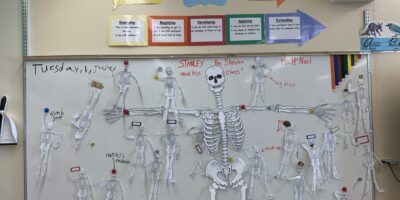Learning progressions “refers to the purposeful sequencing of teaching and learning expectations across multiple developmental stages, ages, or grade levels” (Great Schools Partnership, 2013). Skills such as communication, collaboration, and problem solving are used from early years to advanced years, and teachers must be able to identify them on the appropriate levels. (Kim & Care, 2018). Learning progressions can be used to support student development by using the “Zone of Proximal Development”, and a scaffolding technique. (Kurt, 2020). The zone of proximal development (ZPD) refers to what needs to be done for a learner to achieve or reach where he needs to be, and scaffolding is the method of completing small manageable tasks to reach that developmental goals (Kurt, 2020). For learning progressions to be implemented in teaching there need to be “a carefully sequenced set of building blocks that students mist master en route to mastering a more distant curriculum aim” (Popham, 2007).
Learning progressions are important because they allow for students to further their education based on their individual abilities and not on the general overall abilities of a classroom. This means that a plan of sequences can be built dependent on the students need and not universal and can use the subskills that the student has acquired in previous years to continue to develop further. The zone of proximal development is important in showing how “social interaction on the basis of learning” (Kurt, 2020) between teacher-student and student-peers can help reach learning potentials and develop cognitive skills. Assessment, instructions and curriculum can then all be used to cater to the needs of an individual student based on their zone of proximal development rather than being broad in order to reach the majority of the class. As a future teacher, using a scaffolding system to deliver small manageable tasks to reach a higher goal will be important to develop into my lesson plans, as it has been evident to see in my practicum that all students are not on the same learning levels and to be able to reach all and not just most, these plans can then be set to the students’ needs as well as the teachers.
From the activity of creating a learning progression/ lesson plan for a certain subject or activity, while being able to expand over 5 years was challenging in order to include all aspects of where a student may be. The group I was in chose playing an instrument, starting in grade 3 and going to high school. We first had to create a plan on where to start by learning to read notes, listen to a rhythm and beat, have an understanding of tone etc. Then we built onto starting with the recorder and learning the basic skills of playing that in grade school to being able to choose and instrument and play that in grade 6/7 into high school. Setting stages that a student would have to be at by a certain grade, with the intentions that they should be able to complete a certain skill for music based on past learning, as well as what they would then need to know for the future grade was complex to say the least. The questions that came to my mind were what if a student transferred, or did not pick up on rhythm and beats as fast as other what would they then have to do to make sure they could complete the required skills needed to move onto the next grade/level of that instrument? This activity showed that one I do not know how to lesson plan yet at all, and two that it is not as simple as coming to school with the idea to teach a lesson and the students will understand and complete it right then and there. The information to being able to complete a lesson would be to be knowing where each individual student is at, and how to get them all onto a developing level where they can progress. It was a very eye opening and intimidating activity for me personally. Though it does make me look forward to being able to lesson plan not just for an overall class but for individual students!
Citations
Great Schools Partnership. (2013, August 28th). Learning Progressions. The Glossary of Education Reform. https://www.edglossary.org/learning-progression/
Kim, H and Care, E. (2018, March 27th). Learning Progressions: Pathways for 21st Century Teaching and Learning.Brookings. https://www.brookings.edu/blog/education-plus-development/2018/03/27/learning-progressions-pathways-for-21st-century-teaching-and-learning/amp/
Kurt, S. (2020, August 18th). Vygotsky’s Zone of Proximal Development and Scaffolding. Educational Technology. https://educationaltechnology.net/vygotskys-zone-of-proximal-development-and-scaffolding/
Popham. W.J. (2007, April). All About Accountability/ The Lowdown on Leaning Progressions. The Prepared Graduate, 64(7), 83-84. http://www.ascd.org/publications/educational-leadership/apr07/vol64/num07/The-Lowdown-on-Learning-Progressions.aspx



Leave a Reply